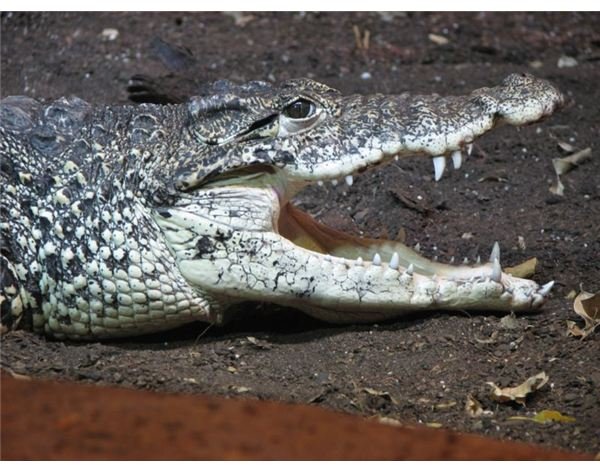Learn About the Cuban Crocodile (Crocodylus Rhombifer)
Description
The Cuban Crocodile is medium sized, reaching on average 10.5 feet in length. They have dark backs which are speckled with black and yellow. Their tails have either black spots or black rings. Their underbellies are light. What really makes the Cuban Crocodile unique is their strong scaly armor and their agility. Cuban Crocodiles are equally powerful and agile on both water and land. They have a large bony ridge behind their eyes and abnormally large scales on the backs of their legs. They have less webbing on their feet than other species of crocodiles which enables them to run fast on land. Their strong tails assist them in swimming in the water and leaping out at prey on land. Intelligent reptiles, they have been observed hunting in packs to bring down large prey.
Habitat and Diet
Cuban Crocodiles live in fresh water swamps. They are currently only found in Cuba, inhabiting the Lanier Swamp and the Zapata Swamp. Their remaining area of habitat is small. Counting the land area that they inhabit in both swamps, they only have approximately 245 miles of habitat.
Young Cuban Crocodiles eat mainly small fish found in the swamps. Older Cuban Crocodiles eat fish and turtles from the swamps and small mammals on the land.
Scientific Classification
Scientific Name: Crocodylus rhombifer
Kindgdom: Animalia
Phylum: Chordata
Class: Reptilia
Order: Crocodylia
Family: Crocodylidae
Genus: Crocodylus
Conservation
Cuban Crocodiles are listed as “Critically Endangered” on the IUCN Red List because their numbers in the wild have decreased by more than eighty percent over the last few decades. They originally inhabited the Bahamas and the Cayman Islands as well as Cuba. Now their are only an estimated 4,000 left in the wild. Illegal hunting of the Cuban Crocodiles for meat and habitat destruction has reduced the numbers of the species in the wild. Another problem is hybridization. The Cuban Crocodiles have been breeding with American Crocodiles. Hybridization dilutes the bloodline of the Cuban Crocodile and contributes to a decline in population.
Conservation efforts include captive breeding programs and the introduction of the captive bred into the wild. Despite conservation efforts, the Cuban Crocodile is in critical danger. Illegal hunting and hybridization still continues. More enforcement is needed to put a stop to illegal hunting. The hybridization issue is a big problem that needs to be solved to save the species. One possible solution is to isolate pure Cuban Crocodiles from other species to prevent interbreeding.
